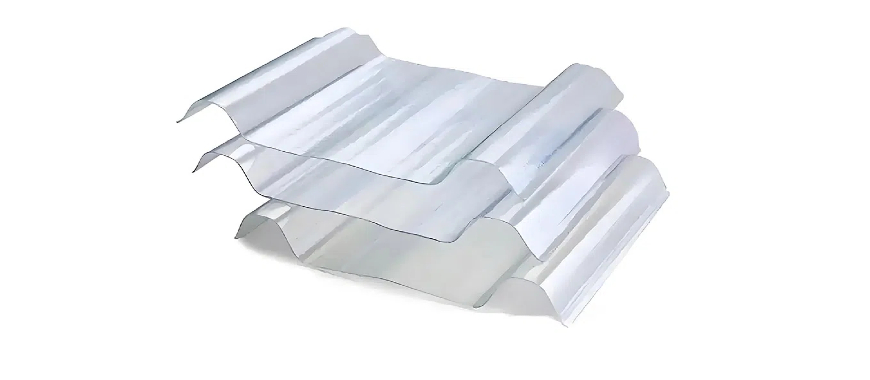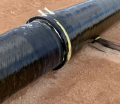
Fiberglass sheet for exhaust is specifically engineered to insulate hot exhaust pipes, ensuring optimal thermal management. By retaining heat, it enhances exhaust gas velocity, which in turn improves engine performance. This insulation is crucial in preventing heat damage to nearby components, thereby increasing their lifespan. The fiberglass sheet for exhaust also minimizes the risk of condensation, which can lead to rust and corrosion over time. Epoxy fiberglass sheet is especially effective in this regard, as it offers superior moisture resistance and durability compared to standard fiberglass options.Whether used in motorbikes, cars, or industrial machinery, fiberglass exhaust wraps provide reliable protection and efficiency. Overall, utilizing a fiberglass sheet for exhaust not only boosts performance but also safeguards your vehicle’s integrity against extreme temperatures.
Purpose of Fiberglass Sheet for Exhaust
The primary purpose of fiberglass sheet for exhaust is to provide effective thermal insulation. By wrapping exhaust pipes with this material, the heat generated during combustion is retained, minimizing heat loss. This not only boosts engine performance but also helps in reducing the likelihood of heat-related damage to other components in the vicinity. The insulation provided by fiberglass sheets is vital in applications where exhaust systems are exposed to harsh conditions, ensuring that the system operates effectively over extended periods.
Key Applications of Fiberglass Sheet for Exhaust
Fiberglass sheet for exhaust is versatile and finds applications across various industries. In automotive contexts, it is commonly used in vehicles ranging from motorbikes to trucks, where it helps manage heat within the exhaust system. Additionally, diesel heaters and marine engines benefit from the thermal protection offered by fiberglass sheets. Industrial machinery also relies on this material to ensure the exhaust systems remain efficient, enhancing the durability of the entire setup.
Temperature Tolerance of Fiberglass Sheet for Exhaust
Temperature tolerance is a crucial characteristic of fiberglass sheet for exhaust. These sheets can continuously handle high temperatures up to 540°C, making them suitable for demanding applications. Moreover, they can withstand intermittent exposure to even higher temperatures, up to 980°C. This high level of temperature resistance ensures that fiberglass sheets maintain their integrity and effectiveness, even in extreme conditions. It is essential to choose the right fiberglass sheet for exhaust based on the specific heat levels anticipated in a given application.
Available Finishes for Fiberglass Sheet for Exhaust
Fiberglass sheet for exhaust comes in a variety of finishes, each suited for different applications and aesthetic preferences. The most common finishes include black, white, and natural (tan or caramelized). The choice of finish can impact not only the appearance but also the performance of the exhaust wrap. For instance, black finishes are often chosen for their sleek look and ability to blend seamlessly with most vehicle designs. In contrast, natural finishes may be preferred in applications where aesthetics play a lesser role but durability remains a priority.
Common Issues with Fiberglass Sheet for Exhaust
While fiberglass sheet for exhaust is generally reliable, certain issues can arise over time. One common problem is the release of fiberglass fibers, which may occur due to wear and tear. This can happen if the wrap is exposed to excessive heat or harsh environmental conditions. Another concern is the potential for smoking, which can indicate that the wrap is breaking down or that there are other underlying issues in the exhaust system. Regular inspection and maintenance are necessary to identify and address these problems early, ensuring optimal performance.
Installation of Fiberglass Sheet for Exhaust
Proper installation of fiberglass sheet for exhaust is critical for achieving the best results. The sheets should be applied to clean, dry surfaces to ensure maximum adhesion and effectiveness. It is advisable to follow manufacturer guidelines for installation techniques, as improper application can lead to ineffective insulation and other issues. Ensuring that the fiberglass sheets are securely wrapped around the exhaust pipes without gaps will maximize their insulating properties and prevent heat escape.
Maintenance of Fiberglass Sheet for Exhaust
Maintaining fiberglass sheet for exhaust is essential for prolonging its lifespan and effectiveness. Regular inspections should be conducted to check for signs of wear, such as fraying or discoloration. If any damage is detected, timely repairs or replacements should be made to prevent further deterioration. Additionally, cleaning the fiberglass sheets can help maintain their appearance and functionality. Avoid using harsh chemicals that could damage the material; instead, opt for gentle cleaning methods that will not compromise the integrity of the wrap.
Environmental Impact of Fiberglass Sheet for Exhaust
The use of fiberglass sheet for exhaust also has environmental considerations. While fiberglass itself is a durable material that can withstand high temperatures, the manufacturing process can generate waste and emissions. However, many manufacturers, including GangLong Fiberglass, are adopting more sustainable practices to minimize environmental impact. Choosing high-quality fiberglass sheets can contribute to a longer lifespan for exhaust systems, reducing the frequency of replacements and the overall waste produced.
Where to Buy Quality Fiberglass Sheet for Signs Online
Key Applications of Fiberglass Sheet for Exhaust
Fiberglass sheet for exhaust is a versatile material widely used in various industries. Its high-temperature resistance and durability make it ideal for applications such as motorbike exhausts. In this context, the fiberglass sheet for exhaust helps reduce heat loss while protecting surrounding components from extreme temperatures. By wrapping the exhaust with fiberglass, enthusiasts can enhance performance and prolong the lifespan of exhaust systems.
Car extractors also benefit significantly from fiberglass sheet for exhaust. These sheets effectively insulate the exhaust components, maintaining optimal temperatures for efficient operation. This is crucial in performance vehicles where engine temperatures can soar, leading to potential damage if not adequately managed. The application of fiberglass sheets for exhaust ensures that heat is contained, thereby enhancing overall vehicle performance.
In the realm of diesel heater exhausts, the fiberglass sheet for exhaust plays a pivotal role. Diesel heaters produce substantial heat during operation, and insulating these exhaust systems is essential for safety and efficiency. The fiberglass sheets for exhaust act as a barrier, minimizing heat dissipation and ensuring that the exhaust remains functional without posing a risk of burns or other hazards.
Marine systems present another critical area for the use of fiberglass sheet for exhaust. Boats and ships require robust materials that can withstand harsh marine environments while effectively managing exhaust heat. Fiberglass sheets for exhaust are resistant to corrosion and moisture, making them suitable for marine applications. By using fiberglass sheets for exhaust, marine operators can ensure that exhaust systems function optimally, enhancing safety and performance.
Industrial machinery is yet another domain where fiberglass sheet for exhaust proves invaluable. Heavy machinery often operates under high temperatures, generating significant heat in the exhaust systems. The application of fiberglass sheets for exhaust helps manage this heat, ensuring that machinery operates efficiently without overheating. This not only extends the life of the equipment but also contributes to better overall performance.
Key Properties of Fiberglass Sheet vs Steel Sheet Revealed
Benefits of Using Fiberglass Sheet for Exhaust
The benefits of fiberglass sheet for exhaust are numerous. One of the primary advantages is its lightweight nature, making it easier to handle and install compared to heavier materials. This is particularly beneficial in applications where weight savings are critical, such as in motorsport and aerospace industries. The reduced weight of fiberglass sheet for exhaust contributes to improved fuel efficiency and performance.
Another significant benefit is the excellent thermal insulation properties of fiberglass sheets for exhaust. They effectively contain heat within exhaust systems, which can lead to improved engine performance. By maintaining higher temperatures in the exhaust, engines can operate more efficiently, leading to better fuel combustion and reduced emissions.
Fiberglass sheet for exhaust also exhibits excellent chemical resistance. In environments where exhaust gases may contain corrosive elements, fiberglass sheets for exhaust provide an effective barrier against degradation. This durability ensures that the exhaust system remains intact and functional over extended periods, reducing maintenance needs and costs.
The flexibility of fiberglass sheets for exhaust allows them to conform to various shapes and sizes, making installation straightforward. Whether dealing with complex exhaust designs in high-performance vehicles or standard configurations, fiberglass sheets for exhaust can be easily applied, ensuring a snug fit that maximizes their effectiveness.
Installation Process of Fiberglass Sheet for Exhaust
Installing fiberglass sheet for exhaust requires careful preparation and attention to detail. Initially, the area must be cleaned thoroughly to remove any grease, dirt, or debris. This step is essential to ensure proper adhesion and effectiveness of the insulation. Once the surface is prepared, the fiberglass sheet for exhaust can be cut to the desired size, allowing for a tailored fit around the exhaust components.
When applying the fiberglass sheet for exhaust, it’s crucial to overlap the edges slightly to avoid gaps where heat can escape. Using high-temperature adhesive can further enhance the bond between the fiberglass sheet for exhaust and the exhaust surface, ensuring that the insulation remains intact under extreme conditions.
After installation, it’s advisable to inspect the wrapped exhaust periodically. This routine check helps identify any potential issues early, such as wear or damage to the fiberglass sheet for exhaust. By maintaining the integrity of the insulation, users can ensure optimal performance and safety from their exhaust systems.
Maintenance Tips for Fiberglass Sheet for Exhaust
Proper maintenance of fiberglass sheet for exhaust is vital for longevity and effectiveness. Regular inspections should be conducted to check for any signs of wear or damage. If any fraying or peeling is observed, it is essential to address these issues promptly, as compromised insulation can lead to heat loss and potential hazards.
Cleaning the fiberglass sheets for exhaust is also important. Using a mild detergent and soft cloth can help remove any accumulated grime without damaging the material. Avoid using harsh chemicals or abrasive materials that could degrade the fiberglass sheet for exhaust.
If repairs are needed, using a fiberglass repair kit can effectively restore the insulation of fiberglass sheet for exhaust. These kits typically include resin and fabric, allowing users to patch up any damaged areas easily. By keeping the fiberglass sheet for exhaust in good condition, users can maximize its benefits and maintain optimal exhaust performance.
Safe Practices for Fiberglass Sheets Disposal in Your Area
FAQs about Fiberglass Sheet for Exhaust
Wrapping the exhaust in fiberglass serves multiple purposes. Primarily, it helps to retain heat within the exhaust system, which enhances the exhaust gas velocity, improving overall engine performance. By keeping the gases hotter, it reduces the chance of condensation forming inside the pipes, which can lead to corrosion. Additionally, fiberglass wrapping protects surrounding components from heat damage, making it particularly beneficial in tight engine bays where space is limited. It can also minimize engine noise, providing a quieter operation. Finally, exhaust wrapping can enhance the aesthetic appeal of your vehicle, giving it a more race-inspired look.
The best material for exhaust wrap typically includes fiberglass or basalt fibers, known for their heat resistance and durability. Fiberglass wrap is popular due to its affordability and effectiveness, capable of withstanding temperatures up to 1,200°F (649°C). Basalt wraps are also excellent options, offering higher thermal resistance and more strength than fiberglass. When selecting exhaust wrap, consider factors like thickness, weave pattern, and length to ensure it fits your specific application. Additionally, look for wraps that are resistant to moisture and oil to maintain their integrity over time.
The fiberglass hair you see coming out of your exhaust is often a result of the breakdown of the exhaust wrap. Over time, the wrap can deteriorate due to extreme heat, moisture, or exposure to exhaust gases, leading to small fibers escaping from the exhaust system. While this isn’t usually a serious issue, it’s essential to monitor the situation. Excessive fiberglass escaping could indicate that the wrap is wearing out and may need replacement. If you notice significant amounts of fiberglass, it’s a good idea to check your exhaust wrap condition and consider re-wrapping to maintain performance and prevent potential clogs.

As the editor of GangLong Fiberglass, I have years of experience and in-depth research, focusing on cable tray products, fiberglass solutions, and grille systems. I incorporate years of industry insights and practical experience into every content, committed to promoting the progress of the industry. At GangLong Fiberglass, my commitment is reflected in every product, from innovative cable trays to durable fiberglass solutions and sturdy grille systems. As an authoritative voice in the industry, my goal is to provide valuable information to professionals and businesses and promote forward-looking solutions.


